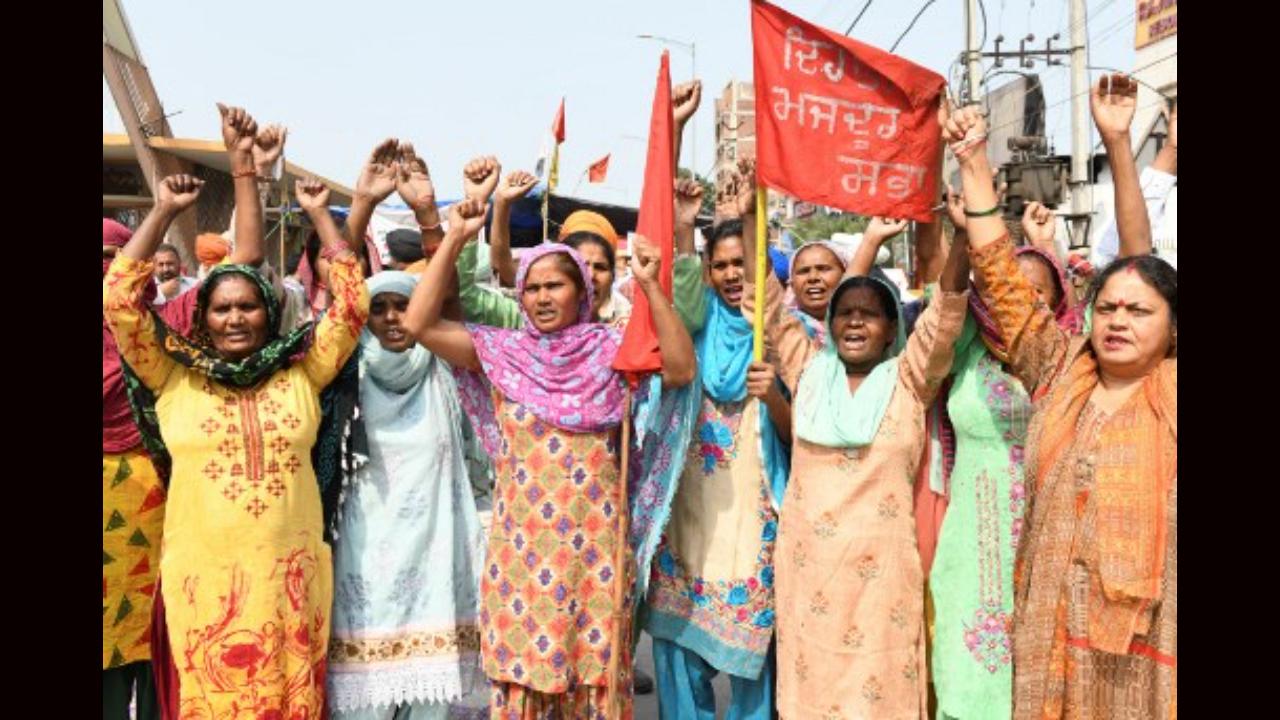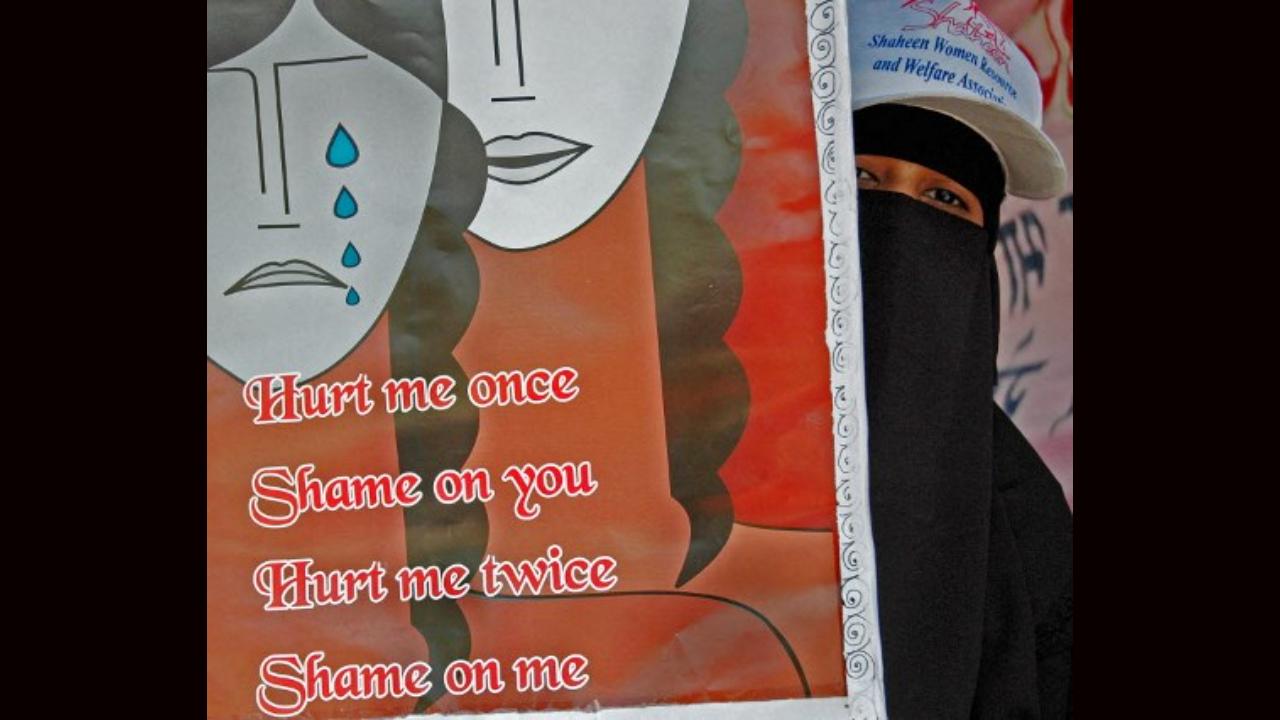A number of laws and constitutional provisions are centred on safeguarding the rights of women and protecting them against violence in India. Here are some of the important laws one should be aware of

Image for representation: AFP
Indians are guaranteed the basic rights to live a dignified life – without any discrimination based on gender, race, caste, religion and other identities – under article 15 and 21 of the Indian Constitution. Likewise, the document also provides for the welfare, representation and wellbeing of women, by setting out the principles on which the state can frame laws for them. Under article 15(3), for instance, the constitution enables the state to make special provisions for women and children if need be to eradicate discrimination and enhance access to public spaces. Similarly, under article 16, women are entitled to equal opportunity for employment to any office.
ADVERTISEMENT
A number of women’s movements and struggles led by human rights groups with diverse communities urged the state to implement certain laws to protect women from various kinds of violence and cater to the dynamics of a time when rigorous practices and patriarchal systems continue to infringe upon the fundamental rights of women, having an impact on their everyday life.
Here are some of the important ones:
The Protection of Women from Domestic Violence Act, 2005
In a first, the act defines and provides protection to women from domestic violence of any kind, physical or mental. The definition of violence in the act also includes verbal, emotional and economic abuse in addition to physical and sexual abuse. The woman facing domestic violence is entitled to avail protection from the authorities, medical aid, and shift to a shelter home and can also apply for monetary compensation or relief. The act also provides for counseling and assistance of welfare experts to the aggrieved person.
The Sexual Harassment of Women at Workplace (Prevention, Prohibition and Redressal) Act, 2013
The Sexual Harassment of Women at Workplace Act was majorly derived from the Vishakha guidelines of 1997, guidelines laid down by the Supreme Court to be followed by establishments under the Vishaka vs. State of Rajasthan case. In 1992, Bhanwari Devi, a Dalit woman who was employed under the Women’s Development Programme of the state, was gang raped by Gujjar men when she attempted to stop a child marriage in the village. The case was taken up several women’s rights organisations, the efforts that brought in Vishaka guidelines and later India’s first legislation on workplace sexual harassment in 2013.
The enactment of the said act was a much needed legislative framework to tackle and prevent sexual harassment of women at workplace. The act mandates the constitution of an internal complaints committee at every workplace employing more than ten employees for addressing such complaints and grievances. It lays out detailed procedures for addressing the complaints, investigation of the matters and provisions for compensation to the aggrieved person.

Indian women from the Asmitha and Shaheen Resource and Welfare Association protest against the review of the Protection of Women from Domestic Violence Act 2005 (PWDVA) in Hyderabad on February 19, 2008.The protest is to demand effective implementation of the act and to reject any attempt to review it in future without the involvement of women's groups. Image credit: AFP
Dowry Prohibition Act, 1961
The Dowry Prohibition Act of 1961 prohibits the giving and taking of dowry. The act criminalises and provides penalties for demanding and giving, taking of dowry or abetting the same between the couples’ families. It also states that the dowry received by anyone other than the woman in the marriage, the amount or property shall belong to the woman and to her heirs, in the event of her death.
The demands to expand the definition of dowry to include ‘gifts’ given to the groom, which could easily be used as a pretext to evade consequences of the law and result in violence against the bride, happened only in 1983. This was a result of feminist movements that gained momentum in the late 1970s. The Shahada movement of 1972, protests led by Progressive organisation of Women in Hyderabad and the Stree Sangharsh protest of 1979 against the death of Tarvinder Kaur, whowas murdered by her in-laws, intensified the discussions around dowry across the country.
The Maternity Benefit Act 1961
In order to regulate the employment conditions of women in an organisation during and after child-birth, the Maternity Benefit Act of 1961 contains provisions for maternity benefit claims, job security during pregnancy, after delivery or miscarriage, leaves, nursing breaks post pregnancy and payment of medical bonus. As per the act, “every woman shall be entitled to, and her employer shall be liable for, the payment of maternity benefit at the rate of the average daily wage for the period of her actual absence immediately preceding and including the day of her delivery and for the six weeks immediately following that day”. As per the amendment in 2017, the act is applicable to every establishment with 10 or more employees and women are entitled for leaves of maximum 26 weeks for the first two children.
Free legal aid under legal services act
The National Legal Services Act of 1987, enacted to provide free legal aid, awareness and services to socio-economically marginalised communities in India. Under section 12 of the act, women and children are entitled to free legal aid and services at all levels of jurisdiction. The legal aid includes payment of court fee, process fee and all other charges incurred during legal proceedings, service of lawyers, paperwork and translation of legal documents.
Property rights
The property and inheritance rights for Hindu women in India are defined by the Hindu Succession Act, 1956 and The Hindu Marriage Act, 1955, which includes Buddhists, Jains and Sikhs, while the same for Muslim women is in accordance with the respective religious law. According to a recent Supreme Court ruling, women are entitled to equal rights over father’s property as men. The Indian Succession Act 1925 lays out the terms for inheritance for Christians, Parsis and Jewish women.
 Subscribe today by clicking the link and stay updated with the latest news!" Click here!
Subscribe today by clicking the link and stay updated with the latest news!" Click here!







